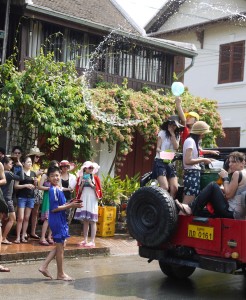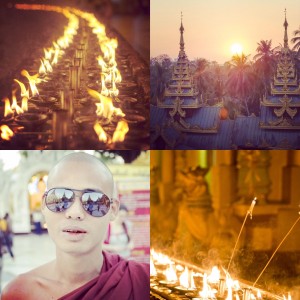Throughout Southeast Asia, it’s time for Buddhist New Year–arguably the region’s most important celebration.
 Called “Songkran” here in Thailand, the festivals of neighboring Laos (“Pii Mai”), Myanmar (“Thingyan”), and Cambodia (“Chaul Chnam Thmey”) have their own variations. One aspect is essentially the same, however: A nationwide water fight which lasts for days.
Called “Songkran” here in Thailand, the festivals of neighboring Laos (“Pii Mai”), Myanmar (“Thingyan”), and Cambodia (“Chaul Chnam Thmey”) have their own variations. One aspect is essentially the same, however: A nationwide water fight which lasts for days.
The water offers symbolic cleansing: A washing away of regrets and bad acts and a fresh start for the year ahead. I think it’s a beautiful idea, and I’ll do my best to remember that as I dart furtively between destinations over the next few days, hoping that my electronics aren’t subjected to an early cleansing from my life by some well-meaning merrymaker.
Amidst all the splashing, though, it’s important to remember that Songkran is a spiritual holiday and the local Buddhist temples are at its core. Even in this era of rapid cultural change and urbanization within Southeast Asia, New Year ceremonies at temples still draw the faithful.
These “wats” (as they’re known throughout the region) often feel inseparable from neighborhoods which have grown up around them. They seem woven into the tapestry of daily life, creating a way of being which–without making a fuss about it–effortlessly combines the modern and the ancient. It’s one of my favorite aspects of Southeast Asian culture and, based on what I see on Instagram, a favorite for many travelers as well.
Share Your Photos of Southeast Asian Temples

Let’s celebrate the New Year together! Share your own images of Southeast Asian temples and temple life on Instagram with a hashtag of #ShotsOfWats. I’ll repost your best photos all week long.
To see the collection as it grows, visit the “Shots of Wats” website. ((Yes, I made a special website just for all your shots of wats. Why not…))

